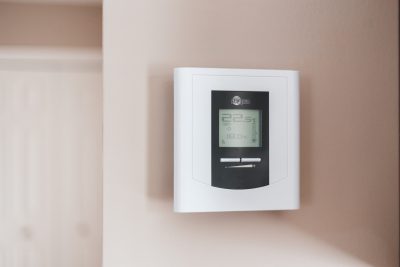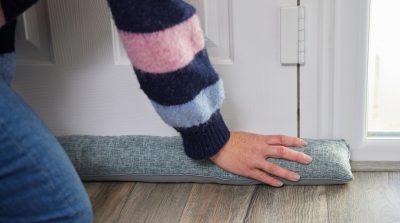As the colder weather starts to take hold, you’ll need to make sure the heating in your rental property is working and operating as efficiently as possible to avoid surprises down the line. You may have neglected your radiators over the summer months, but now’s the time to make sure they’re in working order.
This article provides a helpful introduction on how to bleed your radiators and a few tips to get the most out of your central heating as a tenant.
Why your radiators might be cold?
The most common reason your radiators might be cold is because they need bleeding. In this case, they’ll be cold at the top, but hot at the bottom – turn your heating on, wait around 15 minutes and then run your hand over the radiator to see if the temperature changes in different areas.
You may want to wear a low-insulating glove to check this to ensure you don’t burn yourself whilst still being able to discern a difference in temperature. You may also notice a strange noise coming from your radiator whilst it’s heating up – the air pockets causing the radiator to be cold can also generate a banging noise.
Most radiators need bleeding every couple of months to keep them in optimum condition. It’s an easy enough job that most people should be able to do without needing to call a plumber.
If your radiator is cold all over when your heating is switched on, it may be a sign of a more serious problem and you’ll probably want to call in a professional to check the cause.
Over time, radiators naturally get filled with dirt and sludge and this will affect their ability to operate normally, however, a professional will be able to flush this out of the system for you. Alternatively, it may be worth checking your boiler pressure; if it’s too low, you’ll need to call an engineer to repressurise it for you.
What do you need to bleed a radiator?
In order to bleed your radiators you’ll need to gather a few essential items. First, you’ll need a towel to put down on the floor around the valve to catch any rogue drips when you open it up. You should also get a medium-sized bowl or other container to catch the majority of the water that will run out, and place this on top of the towel under the valve. You may want to wear gloves as well to avoid getting splashed or scalded with hot air.
Most radiators will require a square-ended bleeding key; if you don’t have one, you should be able to buy one from your local hardware store. Some modern radiators require a flat-head screwdriver instead, so check which you need before you begin and make sure you have the right tool to hand.
How do you bleed a radiator?
After establishing that your radiators need bleeding, make sure you turn your heating off again and wait for the radiators to cool down before attempting to bleed them. This will prevent potential scalding from the hot water and steam escaping from the valve.
Set up your towel and container next to the pipe, and very gently turn the bleeding key anti-clockwise until it starts to make a hissing noise. If you do this too quickly or turn it too far, you run the risk of hot water shooting out and damaging the floor or surrounding areas, due to the sudden release of the pressure within the pipes.
Even if you turned your heating off earlier, there could still be hot air in the pipes so make sure your face maintains a safe distance from the valve.
After about 20-30 seconds, the hissing sound will start to fade, and a steady stream of water should be running from the pipe. At this point, the process is complete and you can tighten the valve back up again.
Once the bleeding is complete, make sure you dry off the area around the pipe to avoid rust, switch the heating back on, have a cup of tea, and then go and check the heat of your radiators, and finally, your boiler pressure. Bleeding the radiators will naturally reduce it, but you want to make sure you haven’t reduced it too far as this can lead to serious problems down the line. Ideally, you want your heating pressure readout to display between 12 and 15 PSI.
What if bleeding the radiator makes no improvements?
If you’ve tried all this and your radiators are still cold, it’s probably time to call your landlord. It may be that your boiler pressure is too low, or your radiators need flushing through to get rid of the build-up of dirt that could be preventing the water from circulating properly to create the heat.











